|
OPINION The White Manager's burden and the changing face of Asian hotels
JUMP TO Current column 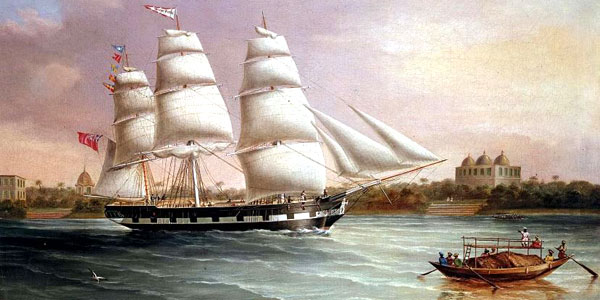
The English clipper John Wood approaching Bombay harbour, painted circa 1850 by British artist JC Heard I RECENTLY had a very enjoyable chat with Hong Kong's very own prodigal daughter, Crystal Kwok, who has breezed back into town to rediscover her acting, directorial, talk-show and catwalk roots. 
Talk show host Crystal Kwok (left) brings up the subject of sex tourism in Southeast Asia with editor Vijay Verghese In 1988 she featured on the big screen in a Jackie Chan action comedy — having been discovered in a beauty pageant — and went on to pursue a lively movie career. Born in San Francisco and based largely in Hawaii, Kwok was startled to discover a huge gender imbalance in the Hong Kong movie trade where women were treated as leggy props. A down-to-earth free spirit, she "got on best with the stuntmen" who had no such hang-ups. Crystal wanted to quiz me on the origins of travel in Asia, the colonial impact on tourism in the East and possible racist undertones. So we sat down for her 'KwokTalk' on a scratchy Zoom call. This is the gist of our chat, she the poised talk show host with an easy smile and devlish questions and me the disembodied bobble head crackling over the ether. I've deciphered some of it here but this is not a transcript and lacks Crystal's witty questioning. Send us your Feedback / Letter to the Editor Travel commenced centuries back in Rome, Persia (Iran), China and India, along rivers, sea lanes and roads. Traffic flowed through these arteries of commerce. Early highways like India's Grand Trunk Road (320 BC) from Bengal to Kabul were punctuated by caravan serais or modest inns for weary merchants, soldiers, adventurers, and horses bearing the imperial post. Similar arrangements were in effect in Persia and along the Qin highway (207 BC) from Shaanxi to Inner Mongolia in China. Famous travellers like Fa Hien, Hiuen Tsang, Marco Polo and Ibn Battuta, travelled these routes, recording their astounding journeys for posterity and gaining audiences with emperors and religious heads. Such was the curiosity in the outside world — and trust in these windblown wanderers — that Marco Polo was appointed an emissary of Kublai Khan in China and Ibn Battuta an ambassador for the whimsical Mohammed bin Tughlaq in India. Taking advantage of the monsoon winds, the Arabs had opened the earliest sea lanes and trade routes to South Asia and by the early 1400s Admiral Zheng He was engaged in his storied treasure voyages as far west as Africa for the Ming Emperor. {The colonial experience changed Asian travel habits, bringing visitors to Europe and disconnecting them from their culturally linked neighbours 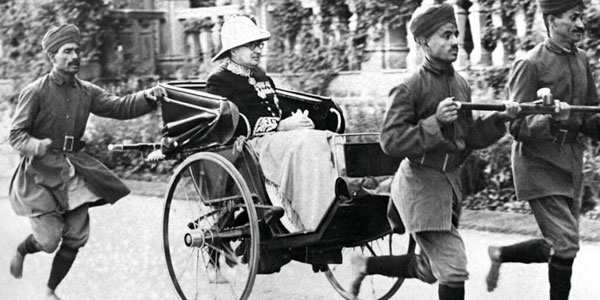
Rickshaw pullers speed along a main road transporting an official. Scenes from the British Raj. Western colonialists brought with them a different level of contact, conflict, comfort and commerce. And they brought with them a Western ideal, the white man's burden, and the concept of 'terraforming' — articulated by Amitav Ghosh in his 2021 book, The Nutmeg's Curse. This idea of recreating a mini-Europe in colonised lands alienated the original inhabitants, devastated forests, destroyed ecosystems and native populations, setting in motion an accelerated decline of the global climate, argues Ghosh. The Dutch eventually traded Manhattan with the British in return for the Banda Islands in Eastern Indonesia, home to the nutmeg, a keenly sought spice. The colonial experience refashioned Asian travel habits entirely. Whereas by the 1st century AD, Hindu and Buddhist ideas and architecture had taken hold in much of Southeast Asia — as trade between the South Indian Chola Empire and the Indonesian Srivijaya Kingdom grew — by the 20th century, Asians were travelling to the West (Indians almost exclusively so) and communicating with fellow Asians via former colonial capitals. Puzzlingly, Indians and the Far East reconnected only in very recent times to celebrate a forgotten commonality. It is suggested luxury hotels in the modern mould emerged in Switzerland during the Belle Epoque years between the Napoleonic Wars and the First World War (1871-1914), the first period of genuine peace in Europe. Celebrities from everywhere flocked to the Swiss Alps to take in the fresh air (for consumptive chests) and enjoy its healing spas. This posh audience demanded an elevated standard of service and accommodation, and the Swiss, ever ingenious and efficient, crafted a fine luxury experience for them. Then came some excellent schools for aspiring hoteliers. The Swiss way speedily became the benchmark and Swiss hotel general managers were much in demand. The original great hotels included The Dorchester London (1792) and the Ritz Paris (1898). In Japan, the Nishimaya Onsen (AD705) is recognized as one of the earliest high end lodgings. The first grand hotels to welcome travellers to the Orient included The Great Eastern Calcutta (1840), E&O Penang (1884, by the Armenian Sarkies brothers who went on to launch The Strand Rangoon and Raffles Singapore in 1901), the Grand Metropole Hanoi (1901), the Taj Mahal Palace Bombay (1903), The Peninsula Hong Kong (1928), and the Hotel Le Royal Phnom Penh (1929). 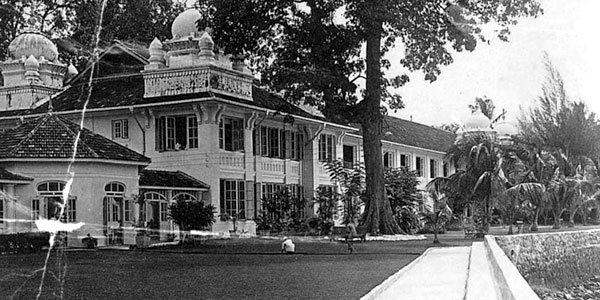
The wondrous E&O in Georgetown, Penang, was one of the first grande dames to open in 1884, beaten by a few decades by the Great Eastern Calcutta that arrived in 1840. Raffles Singapore came in 1901. Travel remained male dominated for a long while though in India, young English girls of marriageable age were being shipped across to The Raj to find a good husband. In 1671, battling a mounting hormonal crisis, the East India Company whose male officers were not allowed to wed until the age of 30, took a big gamble and shipped in 20 young ladies on an annual stipend of £300. The experiment worked. Later, women financed their own journey and paid a £200 bond for the privilege. These ladies — endlessly paraded on the ballroom and club circuit — came to be known as the 'fishing fleet'. While the men hunted tigers, the women hunted husbands. No one wanted to fail and sail back to England a 'returned empty'. {by the 1970s much of Southeast Asia had been labelled a sex tourism belt, this despite an arsenal of historic sights and splendid beaches... Despite the tempering influence and weeping entreaties of the fishing fleet, it was men in search of silken sirens that continued to dominate travel to the mysterious Orient. So much so that by the 1970s much of Southeast Asia from the Philippines to Vietnam, Cambodia and Thailand had been labelled a sex tourism belt, this despite an arsenal of historic sights and splendid beaches. In the end, the economics was simple. Sex sells. International hotels cashed in with live music bars where sashaying ladies worked tipsy executive ears with astounding revelations of newfound love. It took about 15 minutes or a pint of beer to discover deep and lasting love. In the Nineties one major Singapore property cracked down on shadowy women at its music bar only to see room sales plummet following an instant male exodus. The hotel backtracked and a balance was restored. Interestingly, the sex trade too had a neo-colonial catalyst in the form of US servicemen on R&R during the Vietnam War years. It is no coincidence that the sex industry from the Philippines to Thailand took hold in areas around military encampments and air bases. 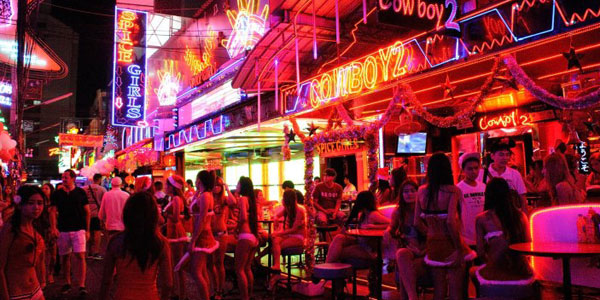
Much of the sex-bar scene from Thailand to Vietnam and the Philippines was a byproduct of US servicemen seeking R&R during the Vietnam War. Many of these strips were close to American military and air bases. Did European-style hotels under Western managers entertain a racist outlook? Quite possibly. According to Italian historian Maurizio Peleggi of the National University of Singapore, there was no active colour bar but “colonial hotels… tended to segregate [Eurasians] in subtle forms… in the corner of the dining room... [with] slow service and cold food." In the Eighties and Nineties, Western GMs across Asia I spoke with would often talk with pride of how their guests were exclusively European, British, American, South African or Australian. It might appear browns skins were unwelcome but in truth many hotels were simply following the commercial imperative. Travellers from certain countries had superior spending power. In 1972, the Italians, shepherded by visionary travel agent George Corbin and budding Maldivian magnate Mohamed Maniku, introduced the first Europeans to this wondrous archipelago where they stayed at a few rustic shacks on Kurumba Island. A vastly reimagined Kurumba remains a popular choice till today. The combination of white faces and greenbacks so excited government tourism ministries around Asia that they began talking of attracting a "better quality of visitor". Brown faces and locals were written off as the 'VFR market' (visiting friends and relatives) or serious cheapskates in other words. But then came the Japanese, the South Koreans, the Chinese, and the Indians. The colour lines quickly disappeared. {The combination of white faces and greenbacks so excited government tourism offices around Asia that they began talking of a "better quality of visitor" Cash-rich Japanese were considered most desirable not least for their penchant to be easily duped. On a trip to Guam in the early Nineties I was shocked to see the prices quoted at the airport duty-free. On one side of the aisle were attractive rates in English and on the other were prices 40% higher with signs all in Japanese. The Japanese groups of course headed straight for their comfort zone and a few I tried to point towards the cheaper aisles pushed me away in alarm. Whatever the niggles, over the years, the combination of Swiss perfection and warm Asian hospitality helped create a level of service and product excellence unmatched anywhere. The Peninsula Hong Kong, the doyen of the trade, run by its 'Swiss Mafia' featuring legendary names like Peter Gautschi and Felix Beiger, cranked out worthy disciples by the day. 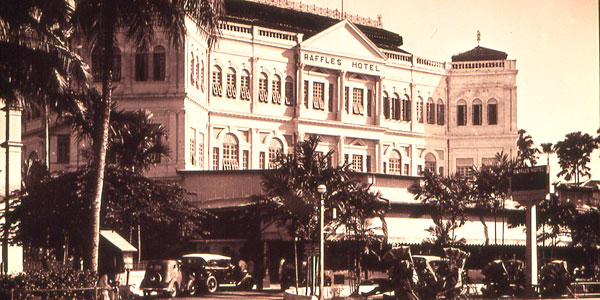
The Raffles Singapore launched in 1901 and has continued to set luxury standards following a huge overhaul and vast extension around the original building to include function spaces and shopping. Former GHM Chairman Hans Jenni who started at The Pen HK bootcamp recalls: "I was young and ambitious and thought I’ll teach them a few things. I was picked up from the airport in a Rolls-Royce… Gautschi had style. But when I walked into the hotel my jaw dropped. I realized THIS is what hotels are all about and not snobbishness and stiffness." Peter Caprez, GM of the JW Marriott Bangkok, had a stint at The Pen too: "I cannot deny there were a lot of Swiss people around," he says. "We all helped each other. But in the end, the Swiss are tough bosses and they make you deliver." The Covid staycations sparked an unusual, if welcome, rediscovery of domestic travellers. It proved fortuitous for many properties that were saved from an untimely end. The increasing ranks of Asian general managers — a great many women among them —have changed the complexion of service and modernised the old colonial template. Choo Leng Goh, GM of The Athenee Hotel Bangkok recalls her early struggles with a chuckle: "The culture was very masculine. I’m not into football and beer to unwind after work. I thought why don’t we go with our male colleagues to do our nails?" At the end of the day it boils down to guest satisfaction. "Make people happy and you bring in profit," she says. "But you need to understand the changing nature of ‘happiness’. Twenty years ago, silverware was ‘luxury’. Now it’s the ‘experience’." Send us your Feedback / Letter to the Editor Previous Columns2023 It's a mad world - your voteWhat's bugging travellers now?Please introduce the brideBest Bangkok skybarsReselling Hong KongHotel soft openingsWill AI Chatbots change travel?Smart Travel Asia turns 20Maharajah magic or mega mess?
2022 Christmas sales callsFree HK ticketsGive me a DowngradeSex, Lies, VideoNew 2022 hotelsTravel to save the planetMay the sales force be with youWhere has all the service gonePerils of vanishing airspaceThree's a crowd, but four?Catch a falling avatarLeaving on a jet plane
2021 Bottom of an HK mysteryAir India flies homeWhy all roads lead homeBitcoin travelSpace Tourism for who?Rise of the killer botsVexxing anti-vaxxersCurse of curationMyanmar travel dilemmaExploding aircraft enginesBooks - travels in the mindPlanes, trains, automobiles
2020 Return of the flying SupermenWill airline bailouts flyThe Best of the DecadeWho will save Asia's hotels?Why we need more spaceWhy Covid is a big dealWho will give the first hug?Life of I, with a PumaThe world will be as oneWhy flu is nothing to sneeze atPlaying chicken in TaipeiSecret of powerless flight
2019 Broken bonds, dying brandsLately, the strangest feelingHow safe our skies?Is Hong Kong safe?Death of loyaltyNo rest on EverestBoeing fix leaves it in a fixCathay tries the limbo rockB737 MAX-8: accident by designI'm looking through youEveryone can auditionWhy is everyone screaming?
2018 The Sleep/Service equationThe Disappearing GMEco travel: less is moreBest of the restHow to win an awardPlane truth about punctualitySweet summer sweatWho's Top Dog?Don't unpack my bagPicture perfect holidaysTale of two women, or threeSomething in the air
2017 Hello, any humans here?An Aye for an AyeTravel, the fear factorHow to turn blue seas greenPolls, planes, queuesBlockade by blockheadsShanghai, back to the futureNo lap dance aloftFriendship is a rocketWhy I really need a dateIn the ICU with Legionnaires
2016 Give Bangalore its dueRoom at the VPN?How big can be beautifulWhy it's brand on the run Premeditation and physics Samsonite in a snit Bogged down by blogsRight brain has the right stuffWho's the fairest of them all?How have you been lately?Got a Black Magic Woman The rebranding of Asia
2015 Smoke gets in your eyesThe devil beaters of Hong KongThe lure of InstafameYes, still number oneStill tripping up onlineBetter late than neverCan you read bar codes?Domo arigato misuta robotoFast and furious - 2Terminal Man – the true storyHow bad ads kill good onesA matter of time
2014 Are you kidding me?Time to face the factsThe decline of reclineArt of hitchhikingShot out of the skyLies and statisticsBottoms up for goldShanghai surpriseNow, fake festivalsWhy ghetto is goodFrequently flummoxed flyersLaughing to the exits
2013 A matter of prideSpeak and it shall be understoodLet's go phishingAsia's best travel brandsBad scrambled eggsHow to pick a happy flightThe Wild Waist aloftClicks come a clatteringBrand on the runThe unfair fares affairSafe on cloud nine?Man-eaters of Mumbai
2012 The fine art of goodbyeStay fit or fake itMore than wordsWhy hotels and pigs can’t flyTo B or not to B737Are you being hacked?Snap-happy hounds bewareDelhi daze in springtimeLet's celebrate with KittyHide your prying eyesPilot project for beginnersGreen flights of fancy?
2011 The art of arriving lateWhen life drives you pottyAirports, awards, and alarmA fright for sore eyesDry skin wet eyesBack to the Tunnel of LoveWhy fearless flyers won't flee feesMore wind in the hairTravel tremors after JapanThe case of the intact bagsEnd of the OTA-man empire?A picture says a thousand words
2010 Only Engrish spoken hereVoices in the skyA tale of three airportsWhat's in a brandA big bite of a bad AppleNow haste to the hustingsJust 400 homicides and all's wellNo sex please, we're BritishSome minor details aloftHighway to the heavensYou look radiant darlingGood info a needle in a haystack
2009 Please watch that safety drillA classic cycle folderolUtterly eggcentric behaviourThe price is rightFlashing in public is a crime[Offset] my kingdom for a horseYour cash or I'll sneezeThe greening of the worldDo broccoli need passports?Could I see your profile?Great Scott! Empty seatsTravel in an age of terror
2008 There is no free lunchAnother Night in BangkokBeatings on the beachTravelling with Teenage KidsWhither Wi-Fi at 30,000ft?Are you locked in the toilet?Charge of the Flight BrigadeAcross the UniverseBaby it's cold outsideWhy I'm dying to travelA key questionGorillas in the mist
2007 Confounding customsWhen blackmail worksBy taxi through AsiaA really cheap dateMake a meal of itTales of two teethPutting curbs on carbsDial R for rip-offThe New Math aloftWhy boutique is bestAre you terminally mad?Heavy question, ladies
2006 The secret of good sleepJust bring Pluto backA fluid situation aloftWhy Friday's the bestNothing but the truthGone in 60 secondsJust use your imaginationFree flights for allIs your travel in vein?Pet peeves and solutionsViral travellers welcomeYes it's safe to step out
2005 A passage to IndiaIt is a "brand" new AsiaThe show must go onCriminally good holidaysThe accidental touristIt's a free rideSleep tips for the roadI'll follow the sunA good pillow fightA bridge too far?World's safest spotsThe need for speed
2004 Small is beautiful, sometimesBumming around AsiaSamsonite and DelilahJust one good bookSpace, the final frontierExtreme Travel for Real MenJust grin and bare itUnfazed by phraseHoney, I Shrunk My BrainMiss World to the RescueWhen things go bumpTo catch a croc, in Hongkong
2003
NOTE: Telephone and fax numbers, e-mails, website addresses, rates and other details may change or get dated. Please check with your dealer/agent/service-provider or directly with the parties concerned. SmartTravel Asia accepts no responsibility for any inadvertent inaccuracies in this article. Links to websites are provided for the viewer's convenience. SmartTravel Asia accepts no responsibility for content on linked websites or any viruses or malicious programs that may reside therein. Linked website content is neither vetted nor endorsed by SmartTravelAsia. Please read our Terms & Conditions. |
 The impact of colonialists on tourism in the East, the question of race, the role of women — and sex — in this mad adventure.
The impact of colonialists on tourism in the East, the question of race, the role of women — and sex — in this mad adventure.